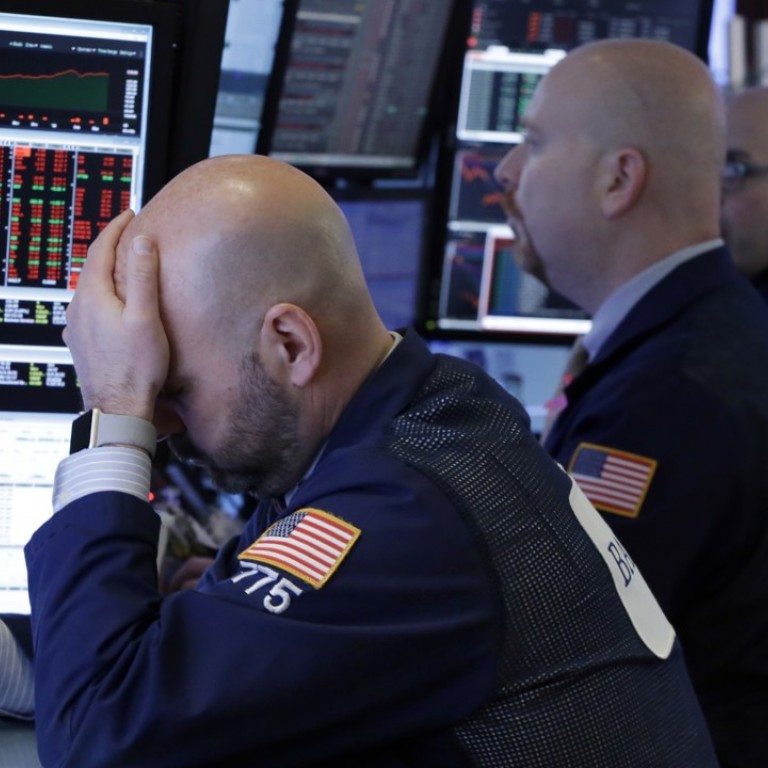
Gold, US stocks, Chinese bonds, Hong Kong-listed H shares or T bills – where’s best to park your money?
One market has outperformed all the others – can you guess which one?
Here’s a fun quiz for you. Which of these is the best performing asset class so far this year?
1. US stocks
2. Hong Kong-listed H-shares
3. Gold
4. US Treasury bonds
5. Chinese government bonds
If you answered number 5, congratulations. If you had had the foresight to invest US$100 (HKD$785) in seven-year Chinese government bonds on December 31 last year, at the end of May your investment, including coupon payments, would be worth US$105.
That might not sound like a huge gain. But it’s better than H shares, the Hong Kong-listed shares of mainland Chinese companies. Including dividends they have returned just 3.1 per cent.

It’s better, too, than the US stock market, where your US$100 would now be worth US$102.65.
Meanwhile, in gold your US$100 would today be worth US$99. And in US Treasury bonds, formerly the world’s favourite safe haven investment in troubled times, it would be worth a paltry US$98.70.
Yet in some ways, this was a trick question. US stocks, US Treasuries, gold and H shares are all familiar markets. But for most investors, Chinese bonds are unknown territory.
This may be about to change. Over the coming months and years, China’s bond markets are likely to achieve greater prominence among investors for their potential to deliver steady, if unspectacular, returns, at a time when other world markets are looking shaky.
Hold those fears of an Asian crisis. US$3 trillion time bomb looks like a slow burner
There are several reasons for this. First there is the trajectory of monetary policy. In the US, after years of zero interest rates and post-crisis quantitative easing, the Federal Reserve is finally shrinking its balance sheet and raising interest rates.
This is a double blow for the US bond market. First, it is no longer supported by Fed buying. Second, when interest rates rise, the fixed income payments on bonds become less attractive in relative terms, and bond prices fall.
This explains why US Treasuries have lost money this year. And with long-term US interest rates thought likely to climb from around 3 per cent currently towards 4 per cent, they are set to suffer further losses in the medium term.
In other developed economies, notably the euro zone and Japan, central banks are still operating negative interest rates and conducting asset purchases. But in both economies, policymakers are looking for an exit route from such extraordinary stimulus. In other words, their next move will be towards a marginal tightening of policy, rather than a loosening. That means bond prices are more likely to fall than rise.
US$400 billion? Er, calm down. The MSCI is no biggie for Chinese stock markets
In contrast, the Chinese authorities are in the early stages of loosening monetary policy. For Beijing, it’s a tricky balancing act. Over the past year, the main aim of China’s economic policymakers has been to reduce risk in the financial sector, by cracking down on the shadow banking market, forcing borrowers to deleverage, and tightening financial regulations.

In response, to relieve some of the pressure, the authorities have started to ease monetary policy. In April, Beijing reduced the proportion of their deposits that banks are required to set aside as reserves, injecting more than 1 trillion yuan into the financial system. Further such moves are likely over the coming months.
In short, the Chinese are easing monetary policy, while other major central banks are either tightening or considering it. This is positive for Chinese bond prices.
Oil is up, dollar is up, interest rates are up. So Asia is heading down?
The second factor at work is currency movements. Your US$100 invested in Chinese bonds is today worth US$105 in part because the yuan has appreciated by 1.6 per cent this year against the US dollar (which itself is up by 2 per cent against a basket of other major currencies).
This across-the-board strength in the yuan is slightly surprising, given that the surplus in China’s current account – the broadest measure of its trade balance with the rest of the world – has been narrowing recently. The Chinese central bank denies that it has been intervening in the foreign exchange market to push up the yuan. If this denial is true – and it is plausible – it implies China is on the receiving end of sizeable capital inflows.
This triple combination – easier monetary policy when other economies are tightening, a strong currency, and solid capital inflows – is likely to continue to support the Chinese bond market.

A far bigger deal is the opening last year of the “bond connect” scheme granting foreigners access to China’s onshore interbank bond market, and the inclusion from next April of Chinese government bonds in the Barclays global bond index. Some US$26.5 billion in foreign funds flowed into Chinese government bonds in just the first four months of this year. And next year’s index inclusion could attract another US$100 billion solely in passively managed funds.
US-China trade war: not about trade, not about Trump. Here’s what it is about
This triple combination – easier monetary policy when other economies are tightening, a strong currency, and solid capital inflows – is likely to continue to support the Chinese bond market. So at a point when many other asset classes around the world are looking richly valued and primed for a fall, it may be time for investors to cast a glance towards China’s bond market. It has outperformed so far this year, and given the shakiness of international markets, it may well go on doing so. ■

